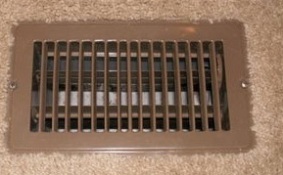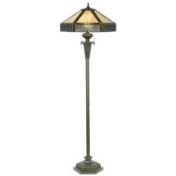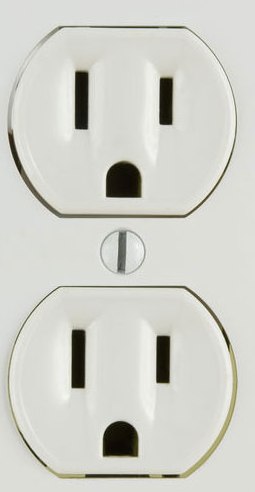
Electrical Dangers at Home
A crawling child / a metal heater grate & a used / old pole lamp
Your a young family, you have not yet made it to the point where your family salaries are up higher, you have moved a couple of time, you try and save some by buying things second hand, or perhaps some things where given to you. You even got a couple of used lamps at a really great deal, a few starch marks on it but nevertheless provides the light that is needed in the living room. Oh before I forget congratulations on your first born child. A few months later the young child is crawling everywhere until one day when you leave the child unattended just for 3 or 4 minutes while you take a bathroom break, you are only really 10 to 20 feet away from where the child is, you are close enough to hear any screams or cries. When you get back the child is lying motionless, what happened.
First I would like to say that it would do every parent good to have taken some basic first aid and CPR training.



Now back to this scenario. The furnace has an equipment grounding conductor on it, that furnace (forced air system) is connected to each room of the home by metal duct pipes. Combined with that you have a metal heater grate with a few scratches on it but still looks good in the floors, metal is electrically conductive, because of the age the thin metal paint that is on the heater grate has some of it scraped off. The pole lamp is sitting not on but near the edge of the grate and any felt or rubber footing at the bottom because of usage and age has come off so now the metal from the foot / frame of the pole lamp is now resting directly on the carpet or wood floor.
Now how did electrical power flow through the child, a damaged light socket allowing a path on one of the conductor wires to the metal frame of the light pole itself, a frayed wire at the wire entrance to the light pole. But why would not have anyone known this, after all you had this lamp for a long time, changed burned out light bulbs in it and no one ever had gotten a electrical shock before. Well that is because up to now no one ever became a pathway to the electrical return path. You have an electrical cord, on most of the smaller lamp fixtures (particularly older ones) have a cord that does not have an equipment grounding conductor on it, the two wires that run in the cord go to the 2 connectors on the light socket itself. Some lamps does not even have polarized plugs.

Polarized Plug
If you look closely at the 2 prongs on the plug end, you will notice, that one prong has a wider end than the other.

Non – Polarized Plug
If you look closely at the 2 prongs on the plug end, you will notice, that both prongs are exactly the same.

Modern Day outlets
With the feature of accepting polarized plugs only one way. You will notice one opening is a bit wider than the other.
If you look at the outlet itself modern day wiring practices and codes require that the ungrounded conductor (hot) ends up on the narrow slit on the outlet, the grounded conductor (neutral) on the wider of the two slits in the outlet. Along with the equipment grounding conductor on the semi round hole on the outlet. Lamps may not have an equipment grounding conductor.

There are two conductions inside the socket for the light bulb to connect to, you see at the bottom of the socket a metal tab and the 2nd connection is the metal threads of the socket where the light bulb screws into.
Now what is suppose to happen is that the ungrounded conductor (hot) gets connected to that inside bottom metal tab, and the grounded conductor (neutral) gets to connected to the outer ring (the threads) of the socket. When the socket becomes damaged / insulation becomes cracked you open up the possibility of that outer ring coming in contact with the frame of the lamp structure / pole itself. Polarized plugs help in that it ensures that ungrounded conductor (hot) is always on the the inside center tab of the socket, and the grounded conductor (neutral) ends up on the outer metal thread part of the socket. However there is really no way of easily knowing this with a non polarized plug as it can be plugged into an outlet either way. In the event that the ungrounded conductor comes in contact with the metal frame / pole of the light structure, then it is just a matter of time before an accident could happen and a physical person completes the return electrical path. Screwing in a new light bulb also puts the person replacing the light in danger if the person completes the path to ground as your hand could be in contact with the screws threads of the light bulb while screwing it in, most built in switches that are part of the socket switches the inside metal tab contact on and off which means if the ungrounded conductor (hot) ends up on the screws threads it will be on even if the lamp is switched off, removing the plug from the wall outlet before changing light bulbs removes the shock hazard when changing light bulbs.
In the scenario in this article, the crawling baby managed to touch the lamp post and the heater grate completing the electrical path through the child’s body, a damaged light socket or a damaged electrical cord could have caused the pole to be end up to have a connection to one side of the line. The steady electrical shock prevented the child from screaming for help.
Well what can you do…
a) inspect the lamp itself for damage.
b) hard plastic heater grates are non conductive where metal ones are conductive. Water if ever spilled onto these could give a moisture path to ground, and water is conductive.
c) Check the lamp pole / frame with a voltage meter when plugged in, from the pole frame and screws on the base of the pole lamp to a nearby ground on a nearby outlet (the small round hole on the outlet NOT the narrow slits on the outlet), it should give a zero voltage reading, if you read any kind of voltage reading something is not right. If you get a high voltage like 100 – 120 volts then the ungrounded conductor (hot) is making a connection to the frame / pole (immediate corrective action is required), if you are getting a far smaller voltage it may be a grounded conductor (neutral) coming in contact with the metal frame as under some circumstances a smaller voltage reading may be detected if other items are in use on the same circuit.
Note: always hold the insulated part of the probes not the metal contacts of the probes of the tester, otherwise you will become the tester and in the event you did found a problem, you will become very much an electrical conductor in this test.
d) As an added measure, keep pole lamps further away from metal heater grates.
e) Replace worn / damaged electrical cords.
f) Whenever possible try to obtain lamps with polarized plugs but older lamps will not have it.
WHILE EXTREME CARE HAS BEEN IMPLEMENTED IN THE PREPARATION OF THIS SELF-HELP DOCUMENT, THE AUTHOR AND/OR PROVIDERS OF THIS DOCUMENT ASSUMES NO RESPONSIBILITY FOR ERRORS OR OMISSIONS, NOR IS ANY LIABILITY ASSUMED FROM THE USE OF THE INFORMATION, CONTAINED IN THIS DOCUMENT, BY THE AUTHOR and / OR PROVIDER.
By: Donald Kerr